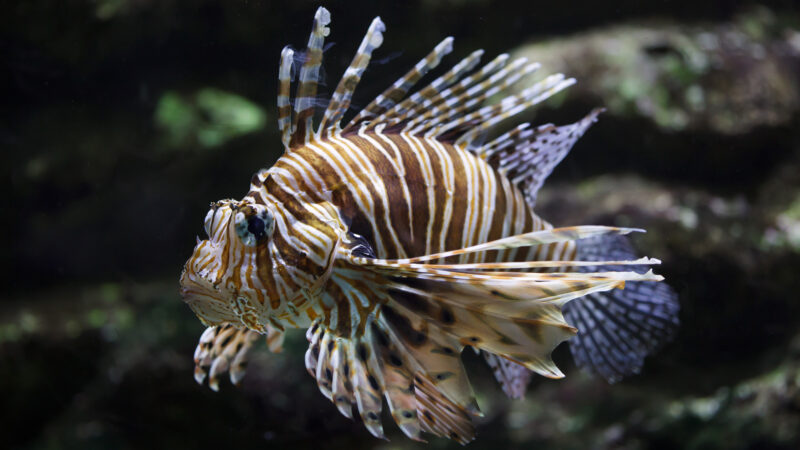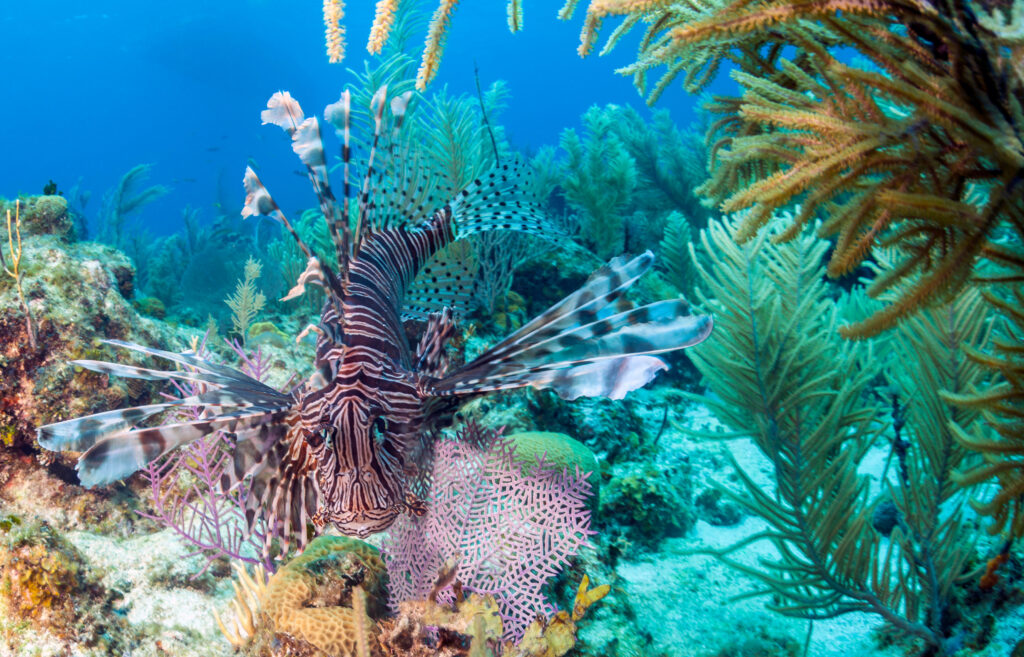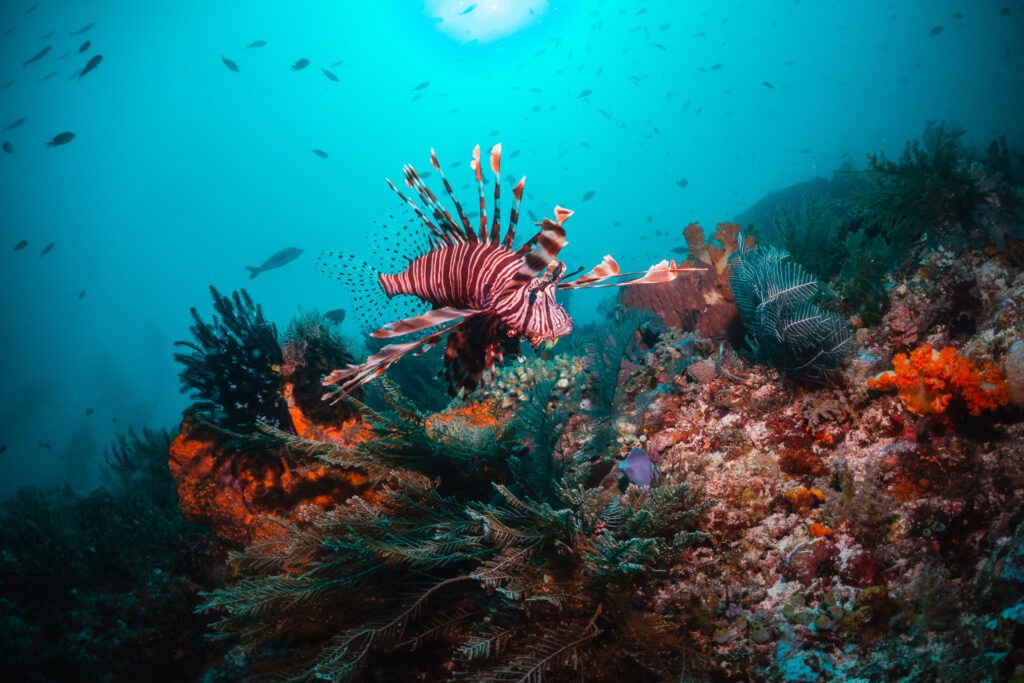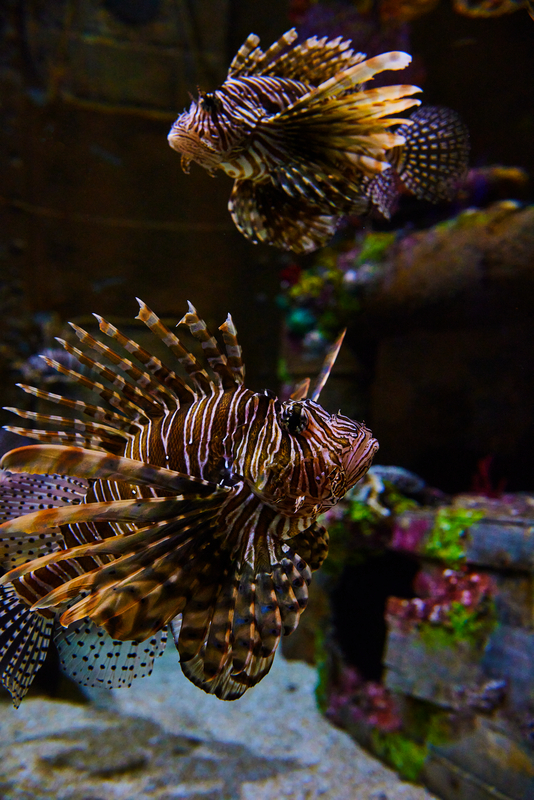Invaders of the Sea: Lionfish

Published August 13, 2024
Lionfish have staked their claim on reefs and other precious marine ecosystems outside their native range – but how did they get there? These alien-like fish are normally found in the Indian and South Pacific Oceans, and it is believed they made their way to new territories in the late 1980s. Others speculate they were released from domestic aquariums as one was spotted off the coast of Florida in 1985.
These venomous carnivores roam along the southeast coast of the United States, parts of the Gulf of Mexico, and the Caribbean. They consume over 50 different fish species, even invertebrates like crab and shrimp. Lionfish are labeled as an invasive species and have become an unstoppable force in these tropical waters.

Throughout the Indo-Pacific, these venomous fish face threats from sharks, grouper, giant eels, and cornetfish. However, as lionfish have spread out to inhabit ecosystems far beyond their native range, they have no natural predators. The venom in their spines makes them untouchable as they continue to invade mangroves, seagrass, coral, and artificial reefs like shipwrecks.
Fish and potential predators do not recognize the lionfish’s striped pattern or physical appearance, so they stay away. This advantage has allowed them to maintain their status in the food chain.
When lionfish first come upon a reef, juvenile fish populations will be reduced by up to 90% in only five weeks. They pose a significant threat to the longevity of many fish populations because of their unquenchable appetite.

It takes less than one year for lionfish to reach their reproductive stage. A single female can reproduce as often as every four days and spawn over two million eggs per year. Researchers at the National Oceanic Association (NOAA) have determined lionfish populations will continue to grow and conventional methods will not eliminate them from non-native ecosystems.
The University of North Carolina at Chapel Hill (UNC) shared how lionfish are out-eating predators in the Caribbean like barracudas and sharks. They write how, “… Mother Nature appears unable to control [their] impact on local reef fish. That leaves human intervention as the most promising solution to the problem of this highly invasive species”.
Organizations, researchers, and wildlife agencies have reached the unanimous decision: to encourage people to hunt and fish for them without restriction. People realize the importance of hunting this species to protect the natural reefs of the tropics.
Lionfish have also become a delicacy and are featured on many menus at restaurants. As more individuals respond to this call to action, the tagline “eat ‘em to beat ‘em” has erupted. Many opportunities in Florida have sprouted in the past decade where locals get paid to harvest these fish. It is a team effort to help restore balance in reefs and other marine community’s lionfish have caused.
At Wonders of Wildlife, there are a handful of lionfish in our Shipwreck Reef exhibit. You can learn more about these animals and observe them up-close. They serve as an educational tool to teach about the impacts of invasive species and the importance of conservation.

News & Updates
Read the latest news & updates about Wonders of Wildlife.
